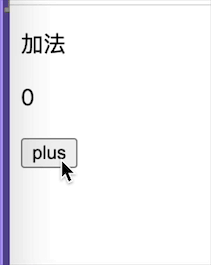在今年对 Instagram Web 进行全新的设计的时候,我喜欢在写 React 组件的时候,用上一些 ES6+ 的新特性。请允许我列举这些能够改变你写 React 应用方式的新特性。比起以往,这些特性能够使你撸起码来更加容易、有趣!
类(Class)
使用 ES6+ 来编写 React 组件最明显的变化就是我们定义组件(类)的语法的方式。我们可以用定义一个继承了 React.Component 的ES6 类来代替原本使用 React.createClass 的来创建类的方式:
class Photo extends React.Component {
render() {
return <img alt={this.props.caption} src={this.props.src} />;
}
}
我们可以发现这种写法使得定义组件的方式变得更加简洁:
// The ES5 way
var Photo = React.createClass({
handleDoubleTap: function(e) { … },render: function() { … },});
// The ES6+ way
class Photo extends React.Component {
handleDoubleTap(e) { … }
render() { … }
}
这样我们可以少写一对圆括号、一个分号、每个方法的冒号和 function 关键字。
所有生命周期方法都可以采用这种方式来定义。 但是 componentwillMount 还可以用 constructor 来代替:
// The ES5 way var EmbedModal = React.createClass({ componentwillMount: function() { … },}); // The ES6+ way class EmbedModal extends React.Component { constructor(props) { super(props); // Operations usually carried out in componentwillMount go here } }
属性初始化(property initializers)
在 ES6+ 类中,属性类型 prop type 和默认属性 default prop 可以通过类中的 static 来声明。同时,组件的初始状态( initial state )可以通过 ES7 的属性初始化(property initializers)来完成:
// The ES5 way
var Video = React.createClass({
getDefaultProps: function() {
return {
autoplay: false,maxLoops: 10,};
},getinitialState: function() {
return {
loopsRemaining: this.props.maxLoops,propTypes: {
autoplay: React.PropTypes.bool.isrequired,maxLoops: React.PropTypes.number.isrequired,posterFrameSrc: React.PropTypes.string.isrequired,videoSrc: React.PropTypes.string.isrequired,},});
// The ES6+ way
class Video extends React.Component {
static defaultProps = {
autoplay: false,}
static propTypes = {
autoplay: React.PropTypes.bool.isrequired,}
state = {
loopsRemaining: this.props.maxLoops,}
}
ES7 中在构造函数( constructor )下的属性初始化操作中的 this 指向的是类的实例,所以初始状态( initial state )可以通过 this.prop (即传入的参数)来设定。
箭头函数(Arrow function)
React.createClass 方法在你的组件上做了一些额外的绑定工作,以确保在组件实实例的方法内部, this 指向的是组件实例自身。
// Autobinding,brought to you by React.createClass var PostInfo = React.createClass({ handleOptionsButtonClick: function(e) { // Here,'this' refers to the component instance. this.setState({showOptionsModal: true}); },});
由于我们使用 ES6+ 的语法定义类的时候没有采用 React.createClass 的方式,所以,这样看来我们不得不手动来绑定这些方法中 this 的指向:
// Manually bind,wherever you need to
class PostInfo extends React.Component {
constructor(props) {
super(props);
// Manually bind this method to the component instance...
this.handleOptionsButtonClick = this.handleOptionsButtonClick.bind(this);
}
handleOptionsButtonClick(e) {
// ...to ensure that 'this' refers to the component instance here.
this.setState({showOptionsModal: true});
}
}
幸运的是,通过 ES6+ 的箭头函数( Arrow functions )和属性初始化( property initializers )这两个特性使得把函数的 this 指向绑定为组件的实例变得非常的简单:
class PostInfo extends React.Component {
handleOptionsButtonClick = (e) => {
this.setState({showOptionsModal: true});
}
}
函数体内的 this 对象,绑定定义时所在的对象,而不是使用时所在的对象。而恰好属性初始化( property initializers )刚好在这个作用域内。
动态属性名 & 字符串模板
在 ES6+ 中对 对象字面量的扩展 使得我们可以在对象字面量中使用表达式来对属性命名。如果是在 ES5 中,我们也许只能这样做:
var Form = React.createClass({
onChange: function(inputName,e) {
var statetoSet = {};
statetoSet[inputName + 'Value'] = e.target.value;
this.setState(statetoSet);
},});
但是,在 ES6+ 中,我们不仅可以在对象字面量属性的定义中使用表达式,还有使用使用 字符串模板 :
class Form extends React.Component {
onChange(inputName,e) {
this.setState({
[`${inputName}Value`]: e.target.value,});
}
}
析构 & 扩展运算符
我们在编写组件的过程中,经常遇到要从父组件要把自己的很多属性多传给子组件的情况。有了 ES6+ 的 析构 和 扩展运算符 特性,这变得非常的方便:
class AutoloadingPostsGrid extends React.Component {
render() {
var {
className,...others,// contains all properties of this.props except for className
} = this.props;
return (
<div className={className}>
<PostsGrid {...others} />
<button onClick={this.handleLoadMoreClick}>Load more</button>
</div>
);
}
}
我们可以把 扩展运算符 属性和普通的属性结合起来使用,这样使得我们可以利用优先级来使用属性的默认值和属性的覆盖。下面这个元素会获得一个 override 的类( class ),及时 this.props 中有传递 className 属性。
<div {...this.props} className="override">
…
</div>
下面这种写法,可以给元素设定默认的 className:
<div className="base" {...this.props}>
…
</div>
最后
我希望你能够享受 ES6+ 的这些特性给你在编写 React.js 中带来的好处。感谢我的同事他们为这篇文章作出的贡献,还有,特别的感谢 Babel 团队,使得我们可以随意的使用这些特性。




